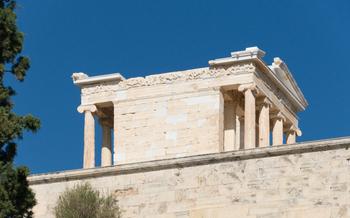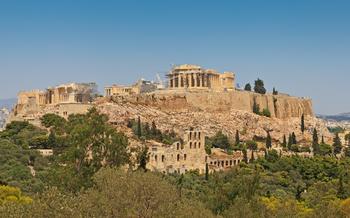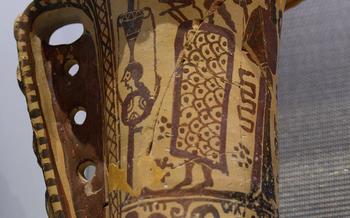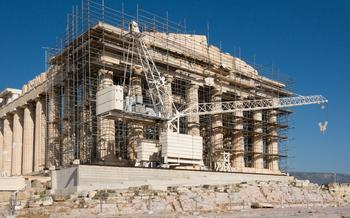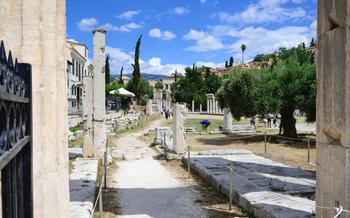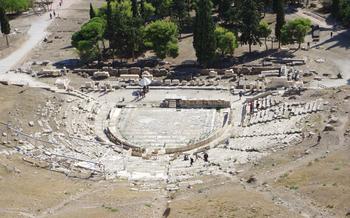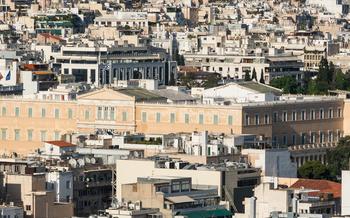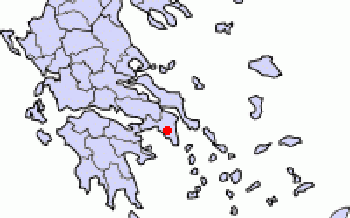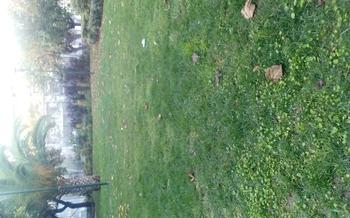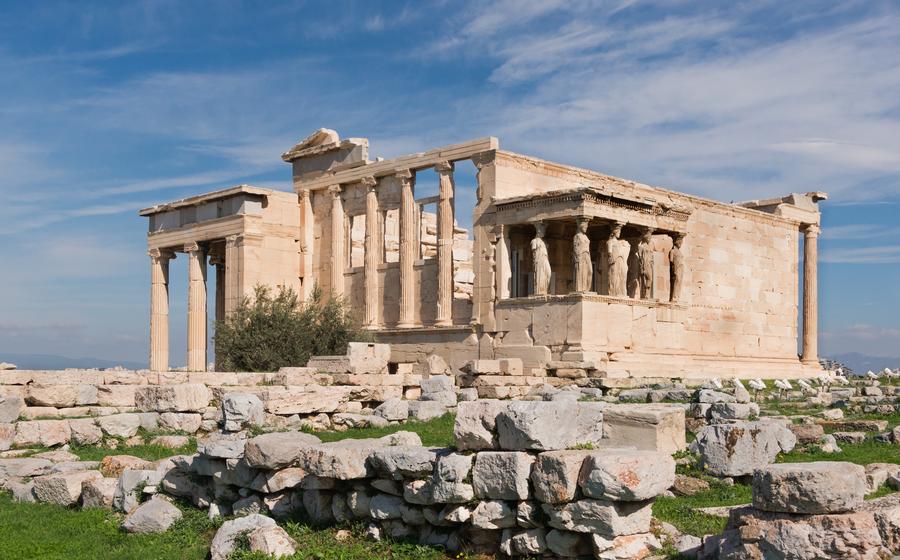
Erechtheion
- Exploring the Erechtheion's Architectural Splendor
- A Journey Through Time: The Erechtheion's Remarkable History
- Unveiling the Mysteries of the Erechtheion's Interior
- The Erechtheion's Enduring Legacy
- Planning Your Visit to the Erechtheion
- Capturing the Beauty of the Erechtheion: Photography Tips
- The Erechtheion and Greek Mythology
- The Erechtheion in Art and Literature
- The Erechtheion's Architectural Innovations
- The Erechtheion and Athenian Identity
- The Erechtheion and Modern Restoration Efforts
- The Erechtheion and Sustainable Tourism
- The Erechtheion: A Source of Inspiration
- Insider Tip: The Best Time to Visit the Erechtheion
Exploring the Erechtheion's Architectural Splendor
The Erechtheion stands as a testament to the architectural prowess of ancient Greece, showcasing a unique and distinctive style that sets it apart from other temples on the Acropolis. Its most striking feature is the Caryatid Porch, an iconic symbol of the temple and a masterpiece of classical sculpture. Six graceful maidens, known as Caryatids, support the roof of the porch with their heads, creating a sense of awe and wonder. Each Caryatid is exquisitely carved from a single block of Pentelic marble, displaying intricate details and subtle variations in their poses and expressions.
Beyond the Caryatid Porch, the Erechtheion boasts several other remarkable architectural elements. The North Porch, with its Ionic columns and elaborate frieze, provides a contrasting yet harmonious entrance to the temple. The South Porch, though smaller in size, features elegant Doric columns and intricate moldings. The east and west facades of the Erechtheion showcase a stunning array of sculptures, including depictions of gods, heroes, and mythical creatures. These sculptures, carved with precision and artistry, add depth and narrative to the temple's exterior, inviting visitors to explore the rich mythology and symbolism that surrounds the site.
A Journey Through Time: The Erechtheion's Remarkable History
The Erechtheion has borne witness to the passage of time and the many transformations that have shaped the city of Athens. In ancient times, it served as a sacred place of worship and religious ceremonies, echoing with the prayers and rituals of the Athenians. During the Byzantine period, it was transformed into a Christian church, its interior adorned with intricate mosaics and frescoes. Later, under Ottoman rule, it was converted into a mosque, reflecting the changing religious landscape of the region.
Throughout its existence, the Erechtheion has faced the ravages of natural disasters and the turmoil of historical events. Earthquakes have shaken its foundations, leaving behind cracks and fissures that tell the story of its resilience. The temple has also endured fires, wars, and invasions, each leaving its mark on its once-pristine facade. Despite these challenges, the Erechtheion has persevered, standing as a testament to the enduring spirit of Athens and its people.
In the 19th century, a new chapter in the Erechtheion's history began with the rise of archaeology and the growing interest in preserving ancient monuments. Extensive restoration efforts were undertaken to repair damage, reinforce weakened structures, and uncover the temple's hidden treasures. These efforts have continued into the present day, with archaeologists and conservators working tirelessly to protect and preserve this iconic landmark for future generations.
Unveiling the Mysteries of the Erechtheion's Interior
Beyond its captivating exterior, the Erechtheion holds a treasure trove of secrets within its sacred spaces. Divided into several chambers and cellas, each room reveals a unique aspect of the temple's history and religious significance.
The most prominent spaces are the cellas dedicated to Athena and Poseidon, the two deities to whom the temple was consecrated. The cella of Athena, also known as the east cella, was adorned with a colossal wooden statue of the goddess, crafted by the renowned sculptor Phidias. This awe-inspiring statue, now lost to time, was once considered one of the most magnificent representations of Athena in all of ancient Greece.
In contrast, the cella of Poseidon, located on the west end of the temple, was dedicated to the god of the sea and earthquakes. While no statue of Poseidon remains, the cella's floor features a natural saltwater spring, known as the Erechtheis, which was believed to have been created by Poseidon's trident. This sacred spring was a source of both awe and reverence for the ancient Athenians, who considered it a direct connection to the divine realm.
Another significant space within the Erechtheion is the Pandroseion, a sacred precinct dedicated to Pandrosos, the daughter of Cecrops, the mythical first king of Athens. This small garden-like area, located on the north side of the temple, was home to a sacred olive tree, said to have been planted by Athena herself. The olive tree was a symbol of fertility and prosperity for the Athenians, and its presence within the Erechtheion added to the temple's sacred aura.
Finally, the Erechtheion was also associated with the cult of Erechtheus, a mythical king of Athens who was believed to have been the son of Athena and Poseidon. Erechtheus was a revered figure in Athenian mythology, and his association with the temple further enhanced its significance as a religious and cultural center.
The Erechtheion's interior, with its sacred spaces, intricate artwork, and rich symbolism, provides a glimpse into the religious beliefs and practices of ancient Athens. Exploring these hidden chambers and uncovering the stories they hold allows visitors to connect with the past and gain a deeper appreciation for the enduring legacy of this architectural masterpiece.
The Erechtheion's Enduring Legacy
The Erechtheion stands as a testament to the enduring power of ancient Greek culture and architecture. Its influence on subsequent architectural styles is undeniable, with its distinctive features inspiring architects and designers throughout history. The temple's harmonious proportions, elegant lines, and intricate ornamentation have become synonymous with classical Greek aesthetics, serving as a model for buildings across the world.
Beyond its architectural significance, the Erechtheion represents the cultural and religious heritage of ancient Athens. It was a sacred space where Athenians worshipped their gods, performed religious rituals, and celebrated festivals. The temple's association with the myths and legends of Greek mythology further cements its place in the collective memory of the Greek people.
In modern times, the Erechtheion has become an iconic symbol of Greece, representing the country's rich history and cultural heritage. Its image is featured on Greek currency, official seals, and emblems, serving as a reminder of the nation's ancient roots. The temple's enduring appeal continues to draw visitors from around the world, who come to marvel at its architectural splendor and experience the awe-inspiring atmosphere of this ancient sanctuary.
The ongoing efforts to conserve and preserve the Erechtheion ensure that it will continue to captivate and inspire future generations. Through careful restoration and maintenance, the temple's legacy will endure, allowing people from all walks of life to appreciate the beauty and significance of this architectural masterpiece for centuries to come.
Planning Your Visit to the Erechtheion
When planning your visit to the Erechtheion, there are a few essential pieces of information to keep in mind. Firstly, admission fees are typically included in the general admission ticket for the Acropolis, which grants access to all the ancient monuments on the hill. Opening hours vary depending on the season, so it's advisable to check the official website or consult with a local tourism office for the most up-to-date information.
To avoid the crowds and ensure a peaceful and meaningful experience, it's recommended to visit the Erechtheion early in the morning or late in the afternoon, especially during peak tourist season. If you're particularly interested in the temple's history and significance, consider booking a guided tour or renting an audio guide, which can provide valuable insights and context as you explore the site.
The Acropolis is a popular destination, so it's worth planning your visit in advance to make the most of your time. Consider combining your visit to the Erechtheion with other nearby attractions such as the Parthenon, the Temple of Athena Nike, and the Propylaea. There are several suggested itineraries available online or through local tour operators that can help you plan an efficient and enriching visit to the Acropolis and its surroundings.
Capturing the Beauty of the Erechtheion: Photography Tips
The Erechtheion's captivating beauty and architectural intricacies invite photographers from around the world to capture its essence through their lenses. To make the most of your photographic journey, here are some tips to help you capture stunning images of this ancient masterpiece:
Choose the Right Time of Day:
- The golden hours of sunrise and sunset provide the most flattering light, casting a warm glow on the temple's exterior and highlighting its intricate details.
- Avoid harsh midday light, which can create harsh shadows and reduce the temple's visual impact.
Experiment with Angles:
- Explore different vantage points to create dynamic compositions.
- Shoot from a low angle to emphasize the temple's towering presence.
- Try capturing the temple's reflection in the nearby pools or fountains for a unique perspective.
Use Natural Light:
- Embrace the natural light to create dramatic and evocative images.
- Position yourself so that the sun's rays illuminate the temple's facade, creating depth and texture.
- Experiment with different shutter speeds to capture the movement of clouds or people, adding a sense of dynamism to your shots.
Compose Your Shots Carefully:
- Pay attention to the composition of your images.
- Include elements such as the surrounding columns, statues, or greenery to create a sense of context.
- Use leading lines, such as the steps or pathways, to draw the viewer's eye towards the temple.
Respect the Sanctity of the Site:
- Remember that the Erechtheion is a sacred site, so be respectful of visitors and worshippers.
- Follow the guidelines for proper conduct, such as maintaining silence and avoiding disruptive behavior.
- Ask permission before photographing people, especially during religious ceremonies or events.
The Erechtheion and Greek Mythology
The Erechtheion is deeply entwined with Greek mythology, serving as a stage for captivating myths and legends that have shaped the identity and heritage of Athens. The most prominent myth associated with the temple is the contest between Athena and Poseidon for the patronage of the city. According to legend, both deities desired to be the protector of Athens and offered gifts to the city in exchange for its allegiance. Poseidon struck the ground with his trident, causing a spring of saltwater to erupt, symbolizing his power over the sea. Athena, in response, gifted the Athenians with an olive tree, a symbol of peace, wisdom, and prosperity. The citizens were so impressed by Athena's gift that they chose her as their patron goddess, and the city was named Athens in her honor.
Another significant myth connected to the Erechtheion is the story of Erechtheus, a mythical king of Athens. Erechtheus was believed to be the son of Athena and was closely associated with the temple. He was said to have been raised by the goddess and taught various skills, including the art of warfare and the cultivation of the olive tree. Erechtheus eventually became king of Athens and ruled wisely and justly, bringing prosperity and glory to the city. His reign is often depicted as a golden age for Athens, and the Erechtheion served as a sacred space where he was worshipped and honored.
The Erechtheion also played a crucial role in Athenian religious rituals and festivals. The Panathenaia, the most important festival of ancient Athens, was celebrated in honor of Athena and involved a grand procession that culminated at the Erechtheion. During the festival, a new peplos, or sacred garment, was woven by young Athenian women and presented to the statue of Athena housed within the temple. The Erechtheion was also the site of other religious ceremonies and rituals, including the Arrephoria, a secret rite performed by young girls in honor of Athena.
The Erechtheion in Art and Literature
The Erechtheion has been a constant source of inspiration for artists and writers throughout history, leaving an indelible mark on various artistic and literary movements. In painting and sculpture, the temple's distinctive architecture and intricate details have been captured in numerous masterpieces. Notable examples include the paintings of the Acropolis by 19th-century Danish artist Christoffer Wilhelm Eckersberg and the sculptures of the Caryatids by artists such as Auguste Rodin and Aristide Maillol.
In literature, the Erechtheion has been immortalized in ancient Greek texts, poetry, and modern literature. Ancient Greek writers such as Sophocles and Euripides referenced the temple in their plays, while poets like Sappho and Pindar composed odes in its honor. In modern literature, the Erechtheion has appeared in works by renowned authors such as Henry Miller, Nikos Kazantzakis, and Lawrence Durrell, who used the temple as a backdrop for their stories, capturing its timeless beauty and historical significance.
The Erechtheion's presence in popular culture is also notable. The temple has been featured in films, television shows, and video games, showcasing its iconic status and global recognition. Notable examples include the 1964 film "Zorba the Greek," which features a scene filmed on the Acropolis with the Erechtheion in the background, and the popular video game "Assassin's Creed: Odyssey," which allows players to explore a virtual recreation of the temple.
The enduring presence of the Erechtheion in art and literature underscores its profound impact on the human imagination. The temple's beauty, history, and mythological associations have captivated artists and writers for centuries, ensuring its legacy as a timeless masterpiece that continues to inspire and fascinate generations.
The Erechtheion's Architectural Innovations
The Erechtheion stands as a testament to the architectural brilliance of ancient Greece. Its innovative features set it apart from other temples on the Acropolis and contributed to its enduring legacy as a masterpiece of classical architecture.
One of the most striking features of the Erechtheion is its asymmetric design. Unlike many other Greek temples, which feature a symmetrical layout, the Erechtheion's plan is irregular, with different dimensions on each side. This asymmetry was necessitated by the temple's unique location on a sloping terrain and its dedication to multiple deities.
Another innovative aspect of the Erechtheion is its use of contrasting materials. The temple's exterior walls are constructed from Pentelic marble, a white, crystalline limestone that was quarried from Mount Penteli, located just northeast of Athens. However, the Caryatid Porch, one of the temple's most iconic features, is made from a darker, coarser limestone known as Eleusinian limestone. This contrast in materials creates a striking visual effect and highlights the unique design of the porch.
The Caryatid Porch itself is an architectural marvel. It consists of six female figures, known as Caryatids, who support the roof of the porch on their heads. These figures are not merely decorative elements but also serve a structural function. The Caryatids are carved from a single block of marble and are remarkably lifelike, with intricate details in their clothing, hair, and facial expressions.
The Erechtheion's innovative architecture reflects the ingenuity and skill of ancient Greek architects. The temple's unique design, use of contrasting materials, and incorporation of the Caryatid Porch demonstrate the remarkable achievements of classical Greek architecture and continue to inspire architects and designers to this day.
The Erechtheion and Athenian Identity
The Erechtheion stood as a testament to Athenian power, prestige, and cultural achievements in ancient times. It was a symbol of the city's wealth, artistic prowess, and commitment to the gods. The temple's intricate carvings, elegant architecture, and association with sacred myths and rituals reinforced Athens' status as a leading city-state in the ancient world.
The Erechtheion's construction coincided with the rise of Athenian democracy, further solidifying its significance as a symbol of the city's political and cultural identity. The temple served as a venue for important religious ceremonies and festivals, bringing together citizens from all walks of life to celebrate their shared heritage and devotion to the gods.
Throughout history, the Erechtheion has endured as a symbol of Greek heritage and national pride. Its depiction on Greek currency, official seals, and emblems underscores its enduring importance as a representation of the nation's cultural identity. The temple stands as a reminder of Greece's rich history, resilience, and the enduring legacy of ancient Athenian civilization.
The Erechtheion and Modern Restoration Efforts
The passage of time and the relentless forces of nature have taken their toll on the Erechtheion, necessitating extensive restoration efforts to preserve and protect this architectural masterpiece. In recent decades, the Greek government and international organizations have collaborated on ambitious projects to address structural issues, repair damage, and ensure the temple's longevity.
One of the primary challenges in restoring the Erechtheion lies in balancing the need to maintain its historical integrity with the use of modern technology and techniques. Conservators must carefully assess the condition of the original materials, such as Pentelic marble, and determine the most appropriate methods for repair and conservation. The use of lasers, 3D scanning, and other advanced technologies allows experts to document and analyze the temple's structure with unprecedented precision, guiding restoration efforts with accuracy and sensitivity.
Ongoing projects focus on addressing structural vulnerabilities, reinforcing weakened areas, and repairing damage caused by natural disasters and pollution. The Erechtheion's iconic Caryatid Porch, which has suffered from erosion and weathering, has been the subject of meticulous restoration work, with damaged or missing sculptures carefully replicated and replaced using traditional techniques.
The restoration of the Erechtheion is a testament to the dedication and expertise of conservators and archaeologists worldwide. By employing innovative methods while respecting the temple's historical integrity, these efforts ensure that this ancient wonder can continue to inspire and awe visitors for generations to come.
The Erechtheion and Sustainable Tourism
The Erechtheion, as a prominent landmark in Athens, attracts a significant number of visitors each year. While tourism plays a vital role in preserving and promoting the temple, it also poses challenges in terms of sustainability. To address these challenges, various measures have been implemented to manage visitor numbers, reduce environmental impact, and promote responsible tourism.
One of the key initiatives is crowd management. The Acropolis, where the Erechtheion is located, has limited capacity, and visitor numbers are regulated to prevent overcrowding. This helps to minimize the wear and tear on the ancient structures and ensures a more enjoyable experience for visitors.
Environmental sustainability is another critical aspect. The use of electric vehicles for transportation within the Acropolis area has reduced carbon emissions. Additionally, waste management practices have been improved to minimize the environmental impact of tourism activities.
Promoting responsible tourism involves educating visitors about the importance of preserving the Erechtheion and following guidelines for proper conduct. Signage and information panels provide visitors with information about the temple's history, significance, and conservation efforts. Visitors are encouraged to respect the sanctity of the site by refraining from touching or climbing on the ancient structures.
Local communities play a crucial role in protecting and preserving the Erechtheion. They are actively involved in promoting sustainable tourism practices, such as encouraging visitors to use public transportation or guided tours and supporting local businesses that operate in a sustainable manner.
By implementing these measures, the Erechtheion and the Acropolis as a whole can be preserved for future generations while ensuring that visitors can continue to enjoy and appreciate this iconic landmark responsibly.
The Erechtheion: A Source of Inspiration
The Erechtheion's architectural brilliance and historical significance have made it an enduring source of inspiration for artists, architects, and designers throughout history. Its unique features, such as the Caryatid Porch and the contrasting materials used in its construction, have captured the imagination of creatives worldwide.
Contemporary architects have drawn inspiration from the Erechtheion's timeless aesthetics and principles, incorporating elements of its design into modern structures. Renowned architect Frank Lloyd Wright was deeply influenced by the temple's design, incorporating classical Greek motifs into his iconic Fallingwater house. The influence of the Erechtheion can also be seen in the works of Le Corbusier, Ludwig Mies van der Rohe, and Oscar Niemeyer, among others.
In the realm of art and design, the Erechtheion's intricate sculptures, decorative elements, and harmonious proportions have served as muses for painters, sculptors, and graphic designers. Its Caryatids, in particular, have been depicted in various art forms, from paintings and sculptures to fashion and jewelry design.
The Erechtheion's enduring legacy as a source of inspiration underscores its timeless appeal and universal significance. Its architectural innovations, artistic beauty, and historical importance continue to captivate and inspire creatives from all walks of life, ensuring its place as a masterpiece that transcends time and cultures.
Insider Tip: The Best Time to Visit the Erechtheion
To fully appreciate the Erechtheion's grandeur and avoid the throngs of tourists, plan your visit strategically. Early mornings and late afternoons offer the most tranquil atmosphere, allowing you to immerse yourself in the temple's ancient aura without distractions. As the sun casts a golden glow on the Pentelic marble, the temple's intricate details and sculptures come alive, creating a truly magical experience.
For photography enthusiasts, the soft, warm light of dawn or dusk provides the perfect conditions to capture stunning images of the Erechtheion. Position yourself at the west end of the Acropolis to capture the temple's silhouette against the vibrant Athenian sky. Alternatively, find a secluded spot near the Erechtheion's south side to capture the interplay of light and shadow on its exquisitely carved columns.
After exploring the Erechtheion, take advantage of its proximity to other Acropolis highlights. Stroll through the nearby ruins of the Parthenon, marvel at the grandeur of the Temple of Athena Nike, or wander through the ancient theater of Dionysus. Each site offers a unique glimpse into the rich history and cultural heritage of ancient Athens.
Remember, the Erechtheion is a sacred site, so be mindful of your behavior and follow the guidelines for respectful conduct. Avoid touching or climbing on the ancient ruins, and refrain from using flash photography or making excessive noise. By respecting the site's sanctity, you contribute to its preservation for future generations to cherish.
